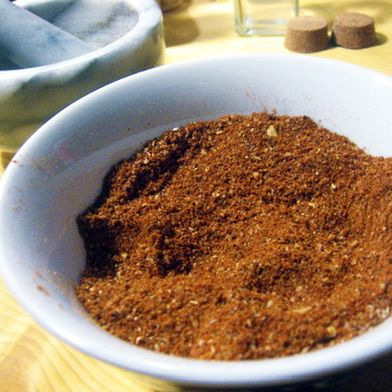Italy and Eritrea have a long, and complicated, history. In 1922, when art and architecture was blossoming in Italy,
Mussolini chose Asmara as the capital of his "Second Roman Empire"— his ideal jumping-off point for Italy's continued imperialist pursuits into Africa—and he
dubbed the city La Piccola Roma, Little Rome. Italian immigrants came to the city in droves (by 1939, over half the population was Italian), and used Asmara as a petri dish for
modernist experimentation.
Given that Eritrea has been mired in decades of warfare, the architecture hasn’t been futzed with. You'll still see magnificent, if worn, Art Deco buildings, broad streets, sidewalk cafés, imported bikes. "In this way," Natasha Stallard
writes in the Guardian, "Eritrea’s political history has been brutal to its people, but strangely kind to its architecture."
But it's not only the architecture that shows Rome's intermingling with Asmara.
Cafés in Asmara might be serving pasta with a sauce spicy from berbere, one of the most widespread flavoring agents of Eritrean and Ethiopian cuisine, alongside classic Eritrean stews, vegetables, legumes, and fermented breads.
And if you look beyond the cacio e pepe and carbonara in Rome (though these, too, were
likely brought to the city by immigrants), you will find East African restaurants; many go easy on the spices—the berbere, the mitmita, the ginger—to appeal to local palates.
In both countries, you can find
Zighini (or Zigni), an East African stew that's served on special occasions because it takes so long to make.
"At any wedding, there will be zighini," Azeb Sium, who was born in Asmara and grew up in Sudan and the United States, explained to me. Her version starts with sautéing finely chopped or blended onions with only berbere for 30 minutes to an hour, then layering on garlic and tomato sauce for another 30-minute simmer, then adding beef and cooking it "for as long as possible."
Zighini (Spicy Beef Stew)
At Trapizzino, a restaurant in Rome that revels in creative versions of classics, the zighini is heavily spiced, deeply satisfying, and slipped into a glorified pizza pocket.
The name of the pocket is the eponymous trapizzino, itself a mash-up of a tramezzino (a triangular lunchtime sandwich) and a pizza. The restaurant's owner, pizzaiolo Stefano Callegari (who's
expanding his empire to the States!), dreamt up the trapizzino as a way to package Rome's rich, sit-down dishes in a portable, accessible form for today’s fast movers. In addition to stuffing
chicken cacciatore, veal tongue in salsa verde, and meatballs in tomato sauce into trapizzino, he also makes
zighini, introduced to him by his half-Ethiopian wife. "As you can find Italian customs and language in [East Africa], you can also easily find Roman people eating zighinì," he said.
When I had a zighini trapizzino in Rome back in January, balancing on a bar stool amidst locals rushing in for takeaway, I felt happy-sleepy-drunk on a stew not fortified by wine or soffritto or five-hundred ingredients. I couldn’t remember a stew so richly savory and comforting—not even one my nonna has made, and especially one whose ingredients listed only "beef, berbere, tomato, extra virgin olive oil, salt, onion."
Berbere
The berbere is doing the heavy lifting here. The spice blend is made up of usually around twelve different spices, and though every blend is a little different, you'll always taste paprika, fenugreek, and the heat of dried chiles. In
Afro-Vegan, Bryant Terry explains that berbere means “hot” in Amharic, the official language of Ethiopia. You can
make it yourself, or buy it at a spice shop—then use it in this stew or
Doro Wat, on vegetables, or, as Terry suggests, on baked tofu or popcorn (hello, yes!).
To land on the recipe you see
here, I used
this as the starting point because its ingredient list was closest to what was listed on Trapizzino's menu. I brown the meat first, though, so that the onions can sweat in the rendered fat, and I let the stew thicken in the oven instead of on the stovetop so it’s a bit more hands-off. Azeb says any cut of beef will work; you could use beef shoulder like Trapizzino, but I really liked how the more-tender short ribs melted into the stew.
One of the beauties of this dish is the softness of a bite, the beef nearly falling apart so that it becomes part of the gravy.
 by Ali Slagle
by Ali Slagle 
